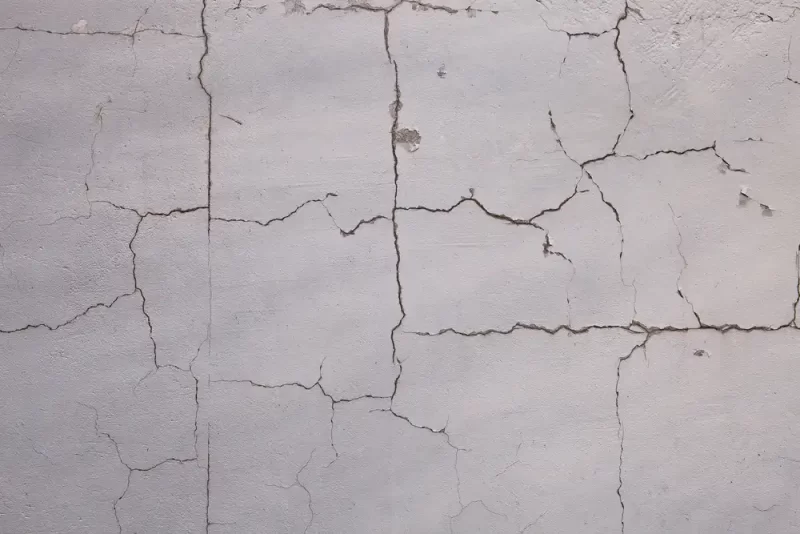Proudly Serving Coastal South Texas
Stucco is a popular exterior finish in South Texas thanks to its attractive appearance and resilience in heat and humidity. But even with its durability, stucco isn’t invincible. One of the most common signs of early wear is hairline cracking—a cosmetic issue that can lead to deeper problems if not handled correctly.
At Bayfront Exteriors, we help homeowners along the Texas Gulf Coast—from Corpus Christi to Rockport—understand and resolve stucco issues before they cause significant damage. Recognizing the signs early gives you the chance to protect your home from water intrusion, mold, and more expensive repairs down the road.

Understanding Hairline Cracks in Stucco
Hairline cracks are very fine, shallow fractures that typically measure less than 1/16 of an inch in width. They may seem like a natural part of the stucco aging process, and in many cases, they are. These cracks usually form as the stucco cures or due to minor building movement, shifts in temperature, or humidity fluctuations.
Although hairline cracks are generally not structural concerns, they can allow water to seep in—especially during South Texas rainstorms or hurricanes. Over time, repeated moisture exposure can break down the integrity of the stucco and lead to more visible deterioration.
Common Causes of Stucco Cracking
Several environmental and structural factors contribute to stucco cracks. In our region, shifting soils and foundation settling are common and can stress exterior walls. In addition, the dramatic swings between hot summer days and cooler nights cause stucco to expand and contract, eventually creating small surface fractures.
Humidity also plays a major role. Coastal homes face higher levels of moisture in the air, which can affect how stucco dries during application and how it reacts over time. Wind-driven rain and salty air can also accelerate the wear on stucco surfaces, especially if not properly sealed or maintained.
Where to Look for Hairline Cracks
To stay ahead of issues, it’s important to inspect your home’s exterior on a regular basis. Hairline cracks often appear around stress points such as window frames, doors, rooflines, and corners where walls meet. You may also see them in shaded or protected areas that trap moisture and slow down drying.
Spiderweb patterns across the surface, straight vertical or horizontal lines, and fine fractures around openings are all signs that cracking has begun. Discoloration or streaking near the cracks could indicate that moisture is already making its way behind the stucco.
What to Do When You See Cracks
If you discover hairline cracks, the first step is to stay calm. These cracks are common, and when addressed early, they can be repaired quickly and affordably. The most important thing is to avoid letting moisture into the wall system, as that can lead to rot, mildew, or damage to the framing behind the stucco.
For fine surface cracks, a high-quality elastomeric caulk or stucco patching compound can seal the area and restore a smooth finish. These materials are designed to stretch and flex with the natural movement of the wall, providing a long-lasting repair.
Before applying any sealant or compound, make sure the area is clean and dry. Remove dust, debris, or any loose particles so that the material can adhere properly. Once the repair is complete, a matching coat of paint can help the patch blend in with the rest of the wall, keeping the look consistent.
When to Call in a Professional
While some hairline cracks can be handled with a DIY approach, others may indicate deeper issues. If you see widespread cracking across multiple areas, or if you suspect that water is getting behind the stucco, it’s time to get a professional assessment.
At Bayfront Exteriors, we offer thorough inspections and expert stucco repairs throughout the Texas coastal region. We’ll determine whether the cracks are superficial or symptoms of a larger concern, and we’ll recommend the best solution to restore your home’s protection and appearance.
Preventing Future Cracks
Preventive maintenance is key to extending the life of your stucco. Regularly inspect your exterior walls, especially after storms or significant temperature changes. Keep gutters clean and ensure proper drainage away from your home’s foundation. Also, seal any gaps around windows, vents, and pipes to prevent moisture intrusion.
If you’re considering a fresh coat of paint, choose high-quality exterior paints designed for stucco surfaces, especially those that offer UV resistance and breathability. These will help protect your walls against the harsh South Texas sun and salt air.
Protect Your Home from Small Cracks and Big Problems
Hairline cracks in stucco may not seem urgent, but they can be the first sign that your home’s exterior is beginning to deteriorate. Addressing these issues promptly will help you avoid more serious and expensive problems down the line.
Whether you need minor stucco patching or a full exterior evaluation, Bayfront Exteriors is here to help. With years of experience repairing homes in our unique coastal climate, we’re committed to helping South Texas homeowners maintain strong, beautiful exteriors.
Contact Bayfront Exteriors today to schedule your free stucco inspection and get ahead of any damage before it grows.

